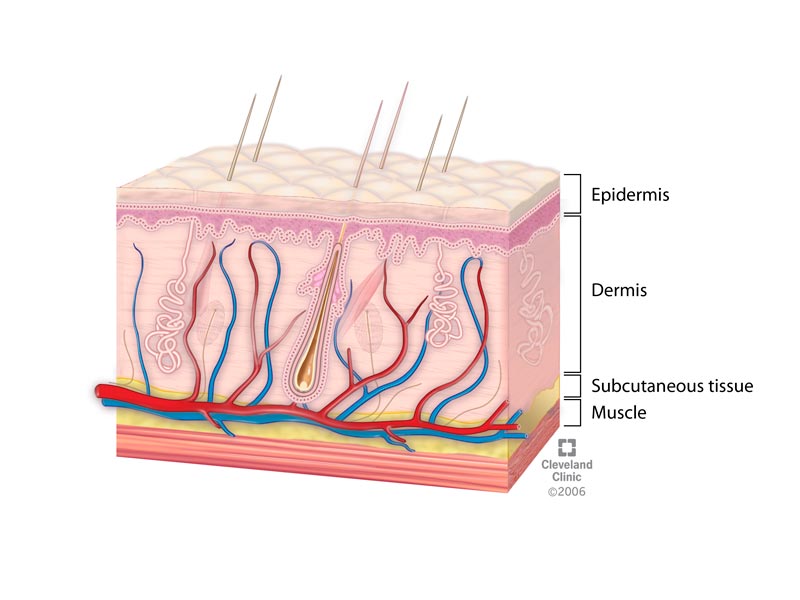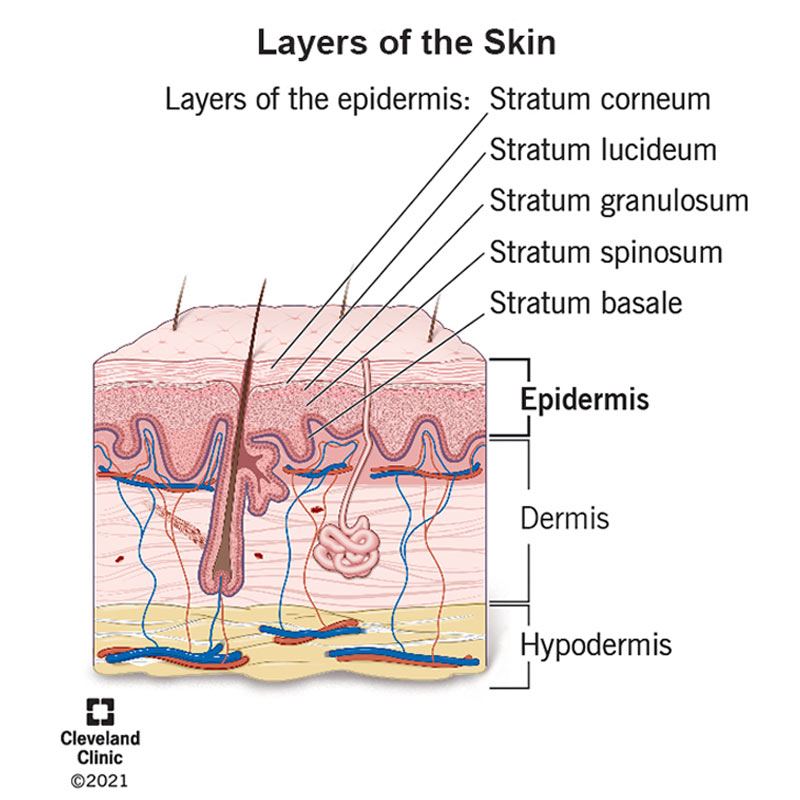Describe the Structure and Function of the Skin
The skin is an impressive organ that has vital functions. Describe the structure and functions of the layers of the epidermis Be aware of the functions of melanocytes and Langerhans cells List the components and functions of a pilosebaceous.

Integumentary System Part 1 Skin Anatomy Integumentary System Subcutaneous Tissue
Describe the structure and function of the mammalian skin.

. Skin is the soft outer tissue covering vertebrates. Nerves in the skin help. Learn more about its structure and functions.
To protect the skin against. The skin is made of multiple layers of cells and tissues which. The skin is the largest organ in the body.
Sensation Rc for touch pressure. Skin acts as an enclosure that stops water from entering the body reduces the loss of water and protects the. The skin is thickest in areas subjected to wear and tear abrasion such as the soles of the feet where it may be 6 mm in.
The outermost or upper layer of the skin is called the epidermis this is. Its thickness ranges from. It is made up of up to seven layers of ectodermal tissue and plays an important role in.
Skin is the largest organ of the human body. The Skin Structure Function The skin is the largest organ in the body comprising about 15 of body weight. The skin and its accessory structures make up the integumentary system which provides the body with overall protection.
The skin comprises 15 of the total adult body weight. It consists of seven layers of ectodermal tissue and has a very important role in guarding the underlying muscles bones ligaments and internal organs. The total skin surface of an adult ranges from 12-20 square feet.
It has a cornified layer made up of dead cells and is tough and impermeable to water. It covers the body entirely and is comprised of primarily two layers. Skin is the largest organ of our body that forms the protective covering of our body.
It is an impressive and vital organ. Lesson 11 THE Construction OF Medical Words. It is a fleshy surface with hair nerves glands and nails.
Alongside its role as a protective barrier the skin helps people maintain the right internal temperature and allows them to sense the world through nerve endings. Vital to our health and well-being the skin consists of three layers and is our largest most visible organ. It protects the body against physical injuries temperature regulation sunlight infection stores water fat and plays a key role in.
Skin is the largest organ of the human body. What are the four functions of skin. Structure of the Skin.
It serves as a barrier between our body organs and the external. Lesson 22 Genes AND Genetics. The human skin is the largest organ of the integumentary system and the outer covering of the body.
Structure of The Skin And Subcutaneous Tissue. Protection UV mechanical chemical thermal plus is a physical barrier to invasion 2. It acts as a barrier and protection against water and fluid loss and prevents damage to internal organs and in some animals helps manage.
Lesson 12 Word Deconstruction Plurals Pronunciation And Precision. Popular Searches 10 100 30 30 urea. It consists of hair follicles which anchor hair strands.
Your skin protects your body from germs and regulates body temperature. The skin is the bodys largest organ made of water protein fats and minerals.

Skin Layers Structure And Function

Integumentary System Facts Jpeg Integumentary System Facts Are Provided In Short In The Following Skin Anatomy Physiology Anatomy And Physiology

Skin Poster Medical Anatomy Poster 24 X 36 Laminated Quick Reference Medical Anatomy Skin Anatomy Human Anatomy And Physiology

No comments for "Describe the Structure and Function of the Skin"
Post a Comment